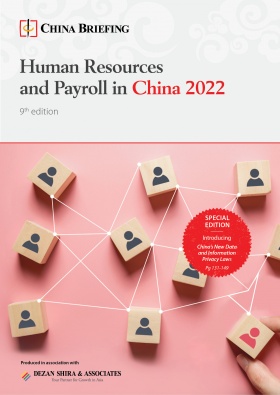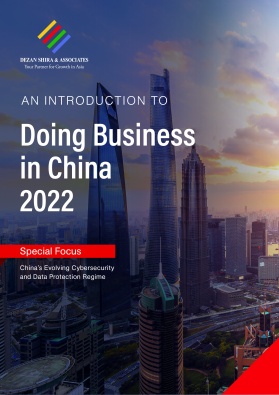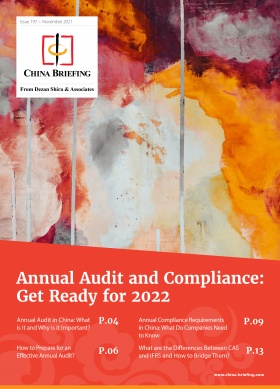Human Genetic Resources in China: New Draft Regulation
Newly released rules stand to make regulation of human genetic resources in China more stringent. Human genetic resources refer to genetic materials and data, such as organs, tissues, cells, genomes, and genes, and are used for research for biopharmaceuticals, medical devices, and other scientific purposes.
On March 21, 2022, the Ministry of Science and Technology (MOST) released the draft Detailed Rules for the Implementation of the Regulations on the Management of Human Genetic Resources (the “Rules”) for public comment. The Rules explain the implementation of human genetic resources management regulations, including general requirements, licensing requirements, record-keeping requirements, approval processes, dispute resolution processes, and enforcement, among other details.
The draft Rules, in their current form, will make international involvement in China’s genetic human resources market more difficult – but not banned entirely. Accordingly, foreign businesses engaged in sectors that work with human genetic resources in China must reassess their exposure to the new regulations to maintain compliance and remain active in the market.
Regulating China’s human genetic resources
The Regulations on the Management of Human Genetic Resources, which came into force on July 1, 2019, were China’s first set of comprehensive regulations on human genetic resources. The Rules offer implementation guidelines for these regulations.
The first regulations on human genetic resources in China were the Interim Measures for the Management of Human Genetic Resources in 1998, followed by the draft Regulations on the Management of Human Genetic Resources in 2005.
The 2019 regulations require all studies considered to be international collaborations to undertake human genetic resources compliance. Further, the regulations consider some types of human genetic resources particularly sensitive, including whole blood, tissue biopsy, and genetic sequencing data, meaning they will be more heavily scrutinized by regulators.
The regulations hold different licensing and compliance requirements depending on the type of human genetic resource activity and the nature of international collaboration or ownership. The stringent nature of human genetic resources regulations not only requires a rigorous pre-entry application and licensing process, but also ongoing reporting, audit, and internal controls to ensure compliance.
Scope of application of draft Rules
According to Article 2, the Rules govern the collection, preservation, utilization, and external provision of China’s human genetic materials. Human genetic materials include, among others, organs, tissues, and cells containing genetic substances – such as human genomes and genes – and data derived from such materials.
The Rules also govern the collection and preservation of human substances, such as organs, tissues, cells, and related activities, for the purposes of clinical diagnosis and treatment, blood collection and supply services, investigation of crimes, doping testing, and funeral and interment services.
Further, as detailed in Article 31, administrative licensing applies to the collection of human genetic resources in China, including:
- Important genetic pedigrees, such as groups with blood relationships that have genetic diseases or hereditary special physical or physiological characteristics;
- Human genetic resources in specified regions, such populations that live in isolation or special environments for a long period of time; and
- Collection activities used for large-scale population study of over 3,000 cases, not including clinical research for relevant drugs and medical devices.
Eligibility of foreign entities
The collection, preservation and external provision of human genetic resources must be conducted by scientific research institutions, higher education institutions, medical institutions, or private enterprises in China, as stated in Article 11. Accordingly, no foreign organizations or individuals may engage in such activities.
According to Article 12, an organization or individual is deemed to be “foreign” if:
- The foreign entity controls more than 50 percent the shares;
- The foreign entity owns less than 50 percent of the shares but can exercise significant impact through voting rights;
- The foreign entity can exercise significant impact through other arrangements; or
- Other circumstances determined by MOST.
Licensing requirements
The draft Rules describe the licensing requirements for various activities relating to human genetic resources, as follows.
Collection
Article 32 lays out the criteria to apply for a license for the collection of human genetic resources. Namely, applicants must have:
- Corporate capacity;
- A clear and legitimate purpose for collection;
- A reasonable collection plan;
- Passed the ethical review;
- A department responsible for the management of human genetic resources and a management system for human genetic resources; and
- Venues, facilities, equipment, and personnel corresponding to the collection activities.
Preservation
To apply for a license for the preservation of human genetic resources, Article 35 stipulates that applicants must have:
- Corporate capacity;
- A clear and legitimate purpose for preservation;
- A reasonable preservation plan;
- Legal sources of human genetic resources to be preserved;
- Passed the ethical review;
- A department responsible for the management of human genetic resources and a preservation management system; and
- Venues, facilities, equipment, and personnel that meet the technical specifications and requirements for preservation.
International cooperation
Article 40 describes the licensing requirements for international cooperation, stating that applicants must ensure:
- There is no harm to the public health, national security, or public interests of China;
- The two parties to the cooperation have the foundation and capacity to carry out relevant work;
- The purposes and content of the cooperative research are clear and legitimate, and the cooperative research period is reasonable;
- The cooperative research plan is reasonable;
- The sources of human genetic resources to be used are legal, and the types and quantities of such resources are consistent with the research contents;
- They have passed the ethical review in the respective countries they are located, contingent upon review by a Chinese ethics committee; and
- The research achievements shall be clearly attributed, and there shall be a reasonable and clear scheme for distribution of benefits.
Export
Licensing requirements for export are delineated in Article 45. To move human genetic resources abroad, applicants must acquire permission from MOST. Applicants must ensure:
- There is no harm to the public health, national security, or public interests of China;
- They have corporate capacity;
- They have clear overseas partners and reasonable purposes of export;
- The human genetic resource materials are collected legally or come from a legal preservation entity; and
- They have passed the ethical review.
In addition to the provisions described in this article, the draft Rules include guidance for many other aspects, including audit and reporting, accelerated approval mechanisms, supervision and inspection, and penalties.
About Us
China Briefing is written and produced by Dezan Shira & Associates. The practice assists foreign investors into China and has done so since 1992 through offices in Beijing, Tianjin, Dalian, Qingdao, Shanghai, Hangzhou, Ningbo, Suzhou, Guangzhou, Dongguan, Zhongshan, Shenzhen, and Hong Kong. Please contact the firm for assistance in China at china@dezshira.com. Dezan Shira & Associates has offices in Vietnam, Indonesia, Singapore, United States, Germany, Italy, India, and Russia, in addition to our trade research facilities along the Belt & Road Initiative. We also have partner firms assisting foreign investors in The Philippines, Malaysia, Thailand, and Bangladesh.
- Previous Article China Q1 2022 Economic Data Overview
- Next Article How Can Expats Complete Annual Individual Income Tax Reconciliation in China?








